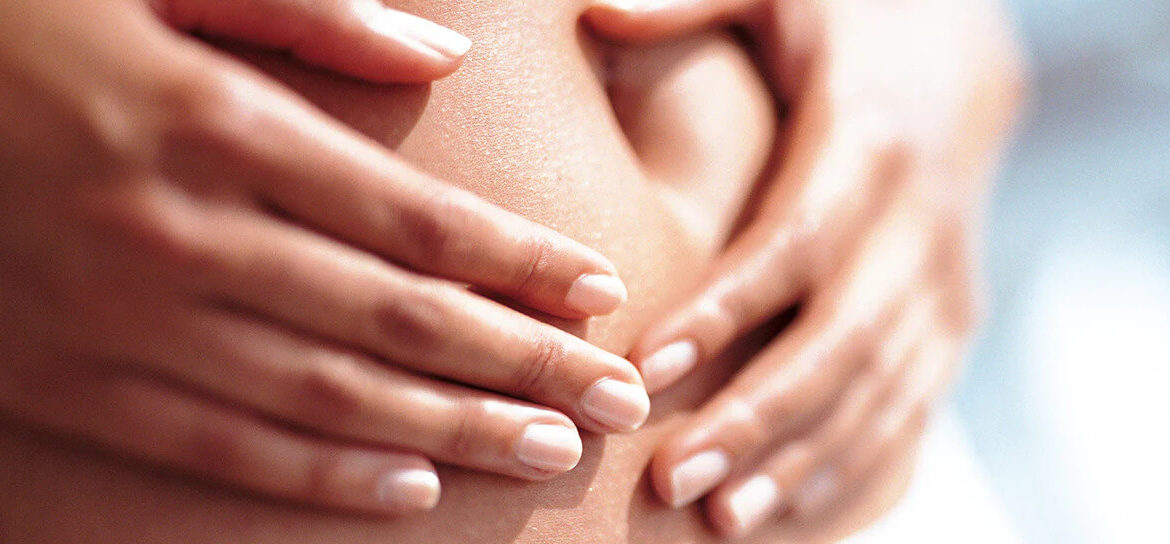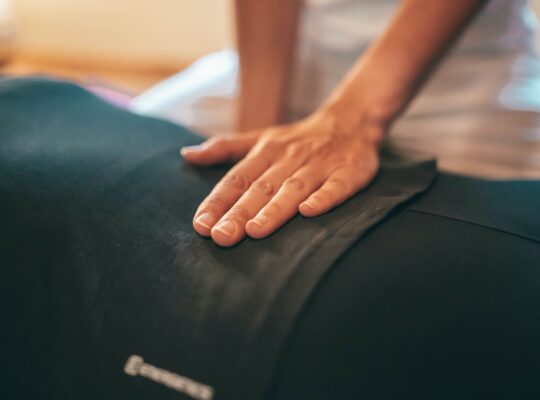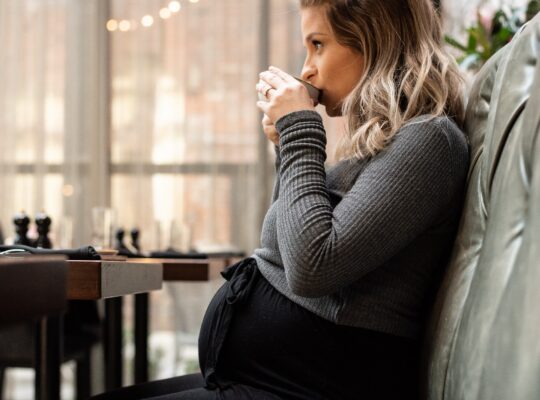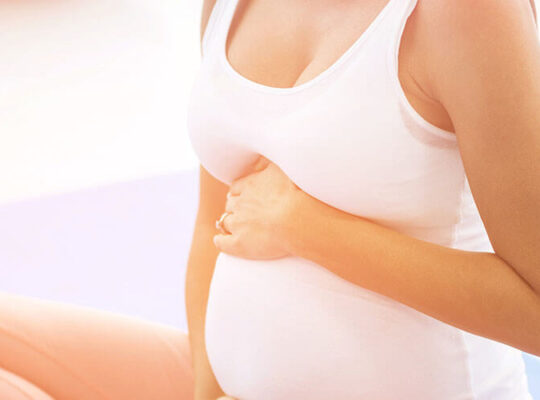Pelvic Floor Therapy for Endometriosis in New York City
Endometriosis Explained
Evidence Pelvic Floor Physical Therapy Reduces Pain
What are Endometriosis Symptoms
How Can Pelvic Floor Physical Therapy Can Help?
Benefits of Pelvic Floor Physical Therapy for Endometriosis
Next Steps To Learn More About Pelvic Floor Physical Therapy for Endometriosis
Pelvic Floor Therapy for Endometriosis
Pelvic floor disorders affect an estimated 24% of women in the U.S., according to the National Institute of Health, and an astounding 80% of women coping with chronic pelvic pain have endometriosis. Fortunately physical therapy can improve endometriosis-related pain associated with the pelvis, spine, and abdomen. Physical therapy is a type of care aimed at treating the musculoskeletal system, by improving movement, strength, and mobility to restore bodily function. Pelvic floor physical therapy is a specialized kind of physical therapy focused on dysfunction in the pelvic floor muscles and the abdominal region.
As a Pelvic Floor Physical Therapist I evaluate the alignment, musculature, fascia (thin layer of connective tissues that is found throughout the body), and movement patterns in the pelvis and body for issues that trigger your pain, impede ease of movement, and decrease your quality of life. I help women with pelvic/abdominal pain, bladder and bowel incontinence, constipation, urinary urgency/frequency, prolapse, pain with sexual activity, pain during pregnancy and the postpartum period, and pain caused by endometriosis – manage their symptoms and improve their quality of life.
Endometriosis Concisely Explained
Endometriosis is a condition in which tissue that normally lines the inside of the uterus, the endometrium, grows in any area outside the uterus, such as the ovaries, fallopian tubes, intestines, bladder, and other organs of the body. Like the endometrial tissue inside the uterus, this endometrial tissue outside of the uterus thickens and breaks down and bleeds with each menstrual cycle. However, unlike the endometrial tissue inside the uterus, the tissue outside the uterus is not eliminated from the body and becomes trapped.
This trapped endometrial tissue can irritate surrounding tissues, leading to scarring and adhesions. Pelvic organs (and other tissues) end up sticking to each other, and these adhesions disrupt the normal friction-free movements of adjacent internal organs and tissues, resulting in pain. Also, endometriotic implants, or what you can think of as endometrial seedlings, can be dispersed throughout the internal pelvis region and abdominal cavity. They grow in response to estrogen and ultimately trigger an inflammatory response causing painful symptoms.
Evidence Pelvic Floor Physical Therapy Reduces Endometriosis Pain Symptoms
- In a retrospective study pelvic physical therapy proved to improve endometrial pain in 63% of patients after 6 sessions. Deep pressure massage, joint mobilization, and use of foam rollers with breathing, stretching pelvic floor muscles, and relaxation techniques were the key elements of the treatment plan.
- Research has indicated 12 weeks of Progressive Muscle Relaxation training is effective in improving depression, anxiety, and quality of life of patients under GnRH agonist therapy (commonly used group of drugs for the medical therapy treatment of endometriosis). My treatment involves pelvic floor muscle (PFM) relaxation training.
- Research determined improvements in posture and reducing pain with an 8 week exercise plan in women diagnosed with mild to moderate endometriosis. Exercises included posture awareness, muscle relaxation techniques, lower back and hip stretches, diaphragm breathing, and walking.
“…physical exercise has beneficial effects on relaxing the muscles of patients’ suffering from endometriosis which in turn helps to break their pain cycle..” – Source: Efficacy of Exercise on Pelvic Pain and Posture Associated with Endometriosis.
Therefore, there is an abundance of research supporting the effectiveness of pelvic floor physical therapy combining exercises, stretches, breathing, relaxation techniques and behavior modification in bringing relief to women coping with endometriosis pain and improving their quality of life.
What are Endometriosis Symptoms Pelvic Floor Physical Therapists Ask About?
Endometriosis is difficult to diagnose and thus is underdiagnosed since the main symptom is pain. Symptoms are often vague and pelvic pain can be downplayed as “normal” menstrual period cramps. Since endometriosis can affect numerous parts of the body — including the vagina and rectum, intestines, bladder, and diaphragm — doctors of varied disciplines often misdiagnose it as other chronic conditions such as irritable bowel syndrome (IBS), ovarian cysts, or some other inflammatory diseases – further contributing to the diagnostic delay. Also, all the common sources of pelvic pain can coexist and happen alongside endometriosis making it harder for health care providers to identify endometriosis as the exact cause of symptoms.
As a result, the average time elapsed between symptom onset and endometriosis diagnosis is 7 years in the U.S. Much of this diagnostic delay is partly due to a lack of awareness in the medical community about how the disease manifests and because so many doctors are not well trained in identifying painful gastrointestinal symptoms as potentially endometriosis.
Endometriosis in a primary care setting is a clinical diagnosis based primarily on a physical exam and history. While there are no definitive blood tests for endometriosis, medical providers can use ultrasound imaging if they suspect an endometriosis diagnosis. Ultimately, the diagnosis can only be definitively confirmed surgically by visualization or biopsy – typically achieved by inserting a tiny camera into the abdomen in a procedure called a laparoscopy.
Common symptoms of endometriosis I ask about include:
- Painful menstrual periods also known as dysmenorrhea. Pelvic pain (cramping) may start prior to a menstrual period continuing for days into it, sometimes accompanied with lower back and stomach pain. Though many have cramping during their menstrual periods, those with endometriosis commonly describe pain that’s significantly worse than usual, often worsening over time.
- Pain during or after sexual intercourse is common with endometriosis.
- Painful bowel movements or urination, especially prior to or during a menstrual period.
- Excessive or heavy bleeding with menstrual periods or bleeding between periods.
- Infertility. For some women unable to conceive, endometriosis is a top consideration during tests for infertility treatment.
- Other symptoms such as diarrhea, constipation, fatigue, bloating or nausea just prior to or during menstrual periods.
It’s important to know the severity of pain does not indicate the extent of endometriosis that may be in the body and some women with endometriosis have no symptoms at all. It’s not uncommon for women to learn they have endometriosis as an ancillary discovery when undergoing surgery or procedures for something else.
How Can Pelvic Floor Physical Therapy Can Help with Endometriosis?
Endometriosis can present multiple issues for a woman’s body and therefore create the need for a multidisciplinary approach to care in addressing the accompanying pelvic pain. Physical therapy is a key component of a multidisciplinary treatment plan to resolve endometriosis symptoms since dysfunction in the pelvic floor is a common underlying issue. If you are coping with endometriosis or suspect that you have it, pelvic floor physical therapy can help manage symptoms. While pelvic floor therapy can not “cure” endometriosis, it can reduce your pain, particularly during your menstrual cycle, during urination and bowel movements, and with sexual intercourse. Pelvic floor physical therapy will be able to improve the movement of fascia and muscles of the pelvic floor, by helping to stretch and glide scar tissue and adhesions.
Endometriosis pain generating adhesions [and lesions] can activate surrounding muscles to protectively guard and when this happens repeatedly, muscle tightness and trigger points develop, along with pain throughout the pelvic floor/vagina, abdomen, and back. All muscles in these regions can become shorter and misaligned due to the continuous responses of the body to endometriosis-related pelvic pain. Pelvic floor physical therapy addresses not only the musculoskeletal system but also the soft tissue dysfunction contributing to this pain. It’s important to know scarring and pain generating adhesions can emerge from three separate events; endometrial lesions, an injury or surgery. In fact research involving 109 women with endometriosis noted 37.6% were determined to have incurred adhesions after laparoscopy (surgery) and there are studies that have reported most women (up to 82%) developed adhesions after radical surgical excision of endometriosis for pelvic pain.
Coping with endometriosis can also involve experiencing pain in an area where there is no musculoskeletal or tissue dysfunction—something called referred pain. “Referred pain” explains how the lower back or abdominal pain you may be feeling actually originates from the pelvic floor muscles. By improving muscle flexibility, strength, sensitivity, and coordination of the pelvic floor, physical therapy revitalizes how the pelvic floor’s muscles can affect the body.
So though pelvic floor physical therapy will not cure endometriosis, it can provide some much-needed pain relief. As noted earlier, endometriosis generally requires multiple strategies since there are usually multiple sources of pain. This is why some women continue to have pain despite having had successful endometriosis excision surgery. Removing endometriosis lesions does not necessarily or automatically end pelvic pain and in such cases, a pelvic floor treatment and rehabilitation plan is a sensible next step.
Benefits of Pelvic Floor Physical Therapy for Endometriosis
Creating a healthy pelvic floor
The muscles of the pelvic floor form a sling shape that span from the pubic bone in the front of the body to the tailbone in the rear of the body. Since these muscles have connections to and support the bowel, bladder, and vagina/uterus they’re helpful with bladder, bowel, sexual function, and stability of the pelvis as a whole. You’ll learn different stretches, strengthening exercises, lifestyle tips and insights to optimize the function of both the pelvic floor and abdominal muscles.
Help reduce painful sex
In order to reduce endometriosis-related pain during sex, it’s helpful to have good flexibility and elongation of muscles inside the pelvic floor and identify any other aspects of the pelvis triggering painful responses during sex. It’s believed endometriosis creates inflammation, scar tissue, and adhesions that leads to formation of myofascial trigger points within the hip, back muscles, abdomen and pelvic floor.
Myofascial pain arises from inflammation in your muscles and fascia (the thin layer of connective tissues found throughout the body and muscles). “Myo” refers to muscle and “fascial” means fascia. These myofascial trigger points are highly sensitive and irritable spots on the body where a tight band or ‘knot’ of fascia and muscle have formed. These trigger points produce both local and referred pain and often accompany chronic musculoskeletal disorders. Abdominal cramping can increase trigger point pain due to mechanical stresses the body undergoes during menstruation.
Also, an endometriosis inflamed environment encourages muscle spasming (a protective response) and thickening of the muscles inside the pelvis as they react to the myofascial tension patterns that have emerged. This is the origin of the common symptom of feeling muscle spasms in the pelvis after sex. My treatment involves pelvic floor muscle (PFM) relaxation training techniques which you will be able to practice at home and help manage your pelvic pain.
Treat other causes of pain
Though you may have endometriosis, not all pelvic pain stems from endometriosis and treating just the endometriosis driven issue(s) may only partially resolve the scope of pain. Another condition that can often coexist with endometriosis and is popularly referred to as the “evil twin” to endometriosis is interstitial cystitis (IC) or painful bladder syndrome. With IC the bladder can become sensitive, inflamed or irritated, resulting in numerous symptoms exacerbated during menstruation including pelvic pain. IC not only instigates pelvic floor pain but also pain in the lower abdomen, back, and legs. Endometriosis and IC have been detected in 80% of women coping with chronic pelvic pain. Additionally women with endometriosis may experience pelvic pain disorders such as pudendal neuralgia and vulvodynia – both with multiple components including nerve and muscle impairments. Each of these conditions (and others) requires a customized approach, tailored to your needs and examination findings. I specialize in gently assessing and treating the full spectrum of pelvic floor disorders with specific manual therapy and exercise-based techniques.
Reduce “endo belly” : The swelling & bloating associated with endometriosis
Many women with endometriosis cope with what is popularly referred to as “endo belly” or excessive bloating. Endo belly is a buildup of inflammation, fluid retention and gas inside the abdomen generally occurring just prior to or during the menstrual cycle. The leading endo belly symptom is a swollen and painful abdomen. Gastrointestinal symptoms, such as diarrhea, constipation, and nausea, are also common.
There are numerous reasons why “Endo Belly” accompanies endometriosis including:
- As endometrial-like tissue builds up, inflammation in the abdomen results in swelling and water retention.
- The endometrial-like tissue can partially cover or grow into the ovaries trapping blood and forming cysts.
- Women with endometriosis are more susceptible to small intestinal bacterial overgrowth or SIBO (excessive bacteria in the small intestine) and fibroids, leading to bloating.
- Endometriosis often causes gastrointestinal issues (constipation and gas).
- Tightness in the pelvic floor can contribute to “endo belly” due to its inability to properly contract and elongate – consequently the belly balloons out.
Some of “endo belly” bloating can be attributed to an inflamed peritoneum (tissue lining the abdominal wall and covering most of the abdominal organs) due to endometriosis. Physical therapy can improve the lymphatic system’s ability to filter fluids throughout your body and increase venous return (flow of blood back to the heart) to encourage the absorption of inflammation.
Next Steps To Learn More About Pelvic Floor Physical Therapy for Endometriosis
Many women are surprised by the personal empowerment and relief they feel in treating the endometriosis-related musculoskeletal issues contributing to their pain. Learning how interconnected the body is, how endometriosis has affected their lives – and how to relieve endometriosis pain with a newly acquired pelvic floor therapeutic skill set is tremendously empowering. Having techniques that can be self-practiced at home or at work during a pain flare up outside of pelvic floor physical therapy is that you have influence over your personal wellness and the quality of your daily life!
If you or someone you know is coping with endometriosis-related pain, don’t delay in seeking help through pelvic floor physical therapy. The information provided is educational, so that you are aware of how pelvic floor physical therapy can help you. Everyone’s circumstances are unique and I can be more insightful on how pelvic floor therapy can help your endometriosis pain upon learning more details of your situation. I do offer a complimentary phone consultation and you’re welcome to reach me at any time.
Reach me if I can answer any questions on physical therapy, serving you locally in New York City or anywhere online virtually through “telehealth“.
Sign up for Pelvic Health and Wellness Tips






